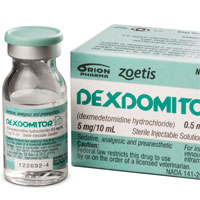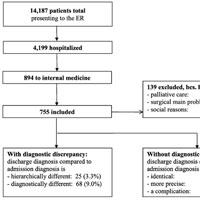Tag: ICU

Disease History to Predict Mortality Risk in ICU Patients
Patients in the intensive care unit are highly heterogeneous, and include elderly patients who generally have a long history of disease. Prediction of prognosis can often be difficult because of the severity of patient illness... read more

Impact of Mean Arterial Pressure Fluctuation on Mortality in Critically Ill Patients
The purpose of this study was to investigate the association between mean arterial pressure fluctuations and mortality in critically ill patients admitted to the ICU. The reduced mean arterial pressure fluctuation (within... read more

Organizational Factors Associated with Target Sedation on the First 48 hours of Mechanical Ventilation
Although light sedation levels are associated with several beneficial outcomes for critically ill patients on mechanical ventilation, the majority of patients are still deeply sedated. Organizational factors may play a role... read more

Outcomes and Costs of Patients Admitted to the ICU Due to Spontaneous Intracranial Hemorrhage
Spontaneous intracranial hemorrhage, including subarachnoid hemorrhage and intracerebral hemorrhage, is associated with significant morbidity and mortality. Although many of these patients will require ICU admission, little... read more

Fluid Responsiveness in Sepsis
Fluid challenge is a common practice in the ICU. It is one of the most important resuscitation manoeuvres of acute circulatory failure management in critically ill patients. Adequate fluid resuscitation is very important... read more

Unsafe Nursing Ratios Incapacitate EDs, Endanger Patients
It's the evening surge at a busy ED where all beds are occupied. Several admitted patients – including 2 critically ill – are waiting for rooms upstairs. A quick glance reveals a full waiting room with multiple potentially... read more

Initial Arterial pH as a Predictor of Neurologic Outcome After Out-of-hospital Cardiac Arrest
Lower pH after out-of-hospital cardiac arrest (OHCA) has been associated with worsening neurologic outcome, with ... read more

Thrombosis and Bleeding in the ICU
ICU patients are high risk of developing thrombotic complications such as deep venous thrombosis (DVT) and pulmonary embolism (PE). Indeed, due to the hypercoagulative state typical for many forms of critical illness associated... read more

The Effect of Dexmedetomidine on Outcomes of Cardiac Surgery in Elderly Patients
The goal of this retrospective study was to investigate the effects of perioperative use of dexmedetomidine (Dex) on outcomes for older patients undergoing cardiac surgery. A total of 505 patients (equal or greater than 65... read more

Machine-learning System Could Aid Critical Decisions in Sepsis Care
Researchers from MIT and Massachusetts General Hospital (MGH) have developed a predictive model that could guide clinicians in deciding when to give potentially life-saving drugs to patients being treated for sepsis in the... read more

Addressing Shortcomings in Infection and Sepsis Treatment Should Be Top of the Priority List
Hospitals are increasingly facing the challenge of cutting costs while also improving clinical outcomes. This is certainly true in the infectious disease sector, as unrecognized or ineffectively treated bacterial infections... read more

Describing Organ Dysfunction in the ICU
Multiple organ dysfunction is a common cause of morbidity and mortality in intensive care units (ICUs). Original development of the Sequential Organ Failure Assessment (SOFA) score was not to predict outcome, but to describe... read more

Closed ICU Model Linked to 100% Reduction in Several HAIs
A closed intensive care unit model, in which a patient is evaluated and admitted under an intensivist and patient care orders are written by ICU staff, can help reduce rates of several healthcare-associated infections (HAI),... read more

Diagnostic error increases mortality and length of hospital stay in patients presenting through the emergency room
Diagnostic errors occur frequently, especially in the emergency room. Estimates about the consequences of diagnostic error vary widely and little is known about the factors predicting error. Our objectives thus was to determine... read more








